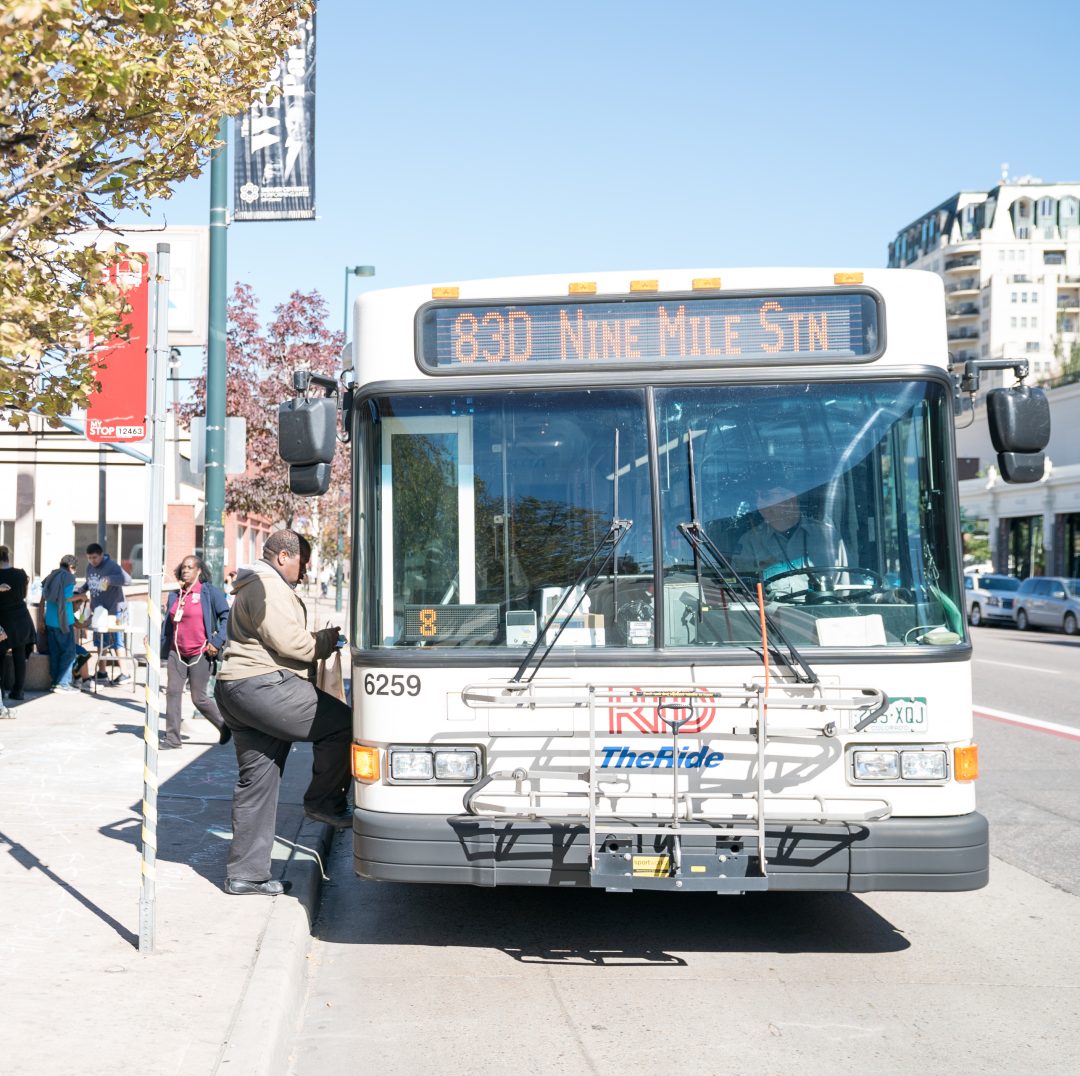The following opinion piece by Jill Locantore was originally published in Colorado Politics on July 26, 2019.
To address many of the challenges resulting from Denver’s booming growth, City leaders should immediately improve the bus system.
It’s not surprising that with growth comes increased traffic, but it’s also not inevitable. A shining example is Seattle, where the population increased 23% between 2006 and 2017 while daily traffic volumes declined by 5%. Like Denver, Seattle expanded its rail system during this period. Unlike Denver, Seattle also invested heavily in its more extensive bus system and increased households within a 10-minute walk of frequent transit service from 25% in 2015 to 64% in 2017.
Beyond taming traffic, a better bus system would bring a wide range of benefits to Denver residents. One major benefit is affordability. After housing, transportation is typically the second biggest household expense. The average vehicle costs more than $9,000 per year to own and operate, whereas the most expensive transit pass from RTD costs $2,400 per year, and many discounts are available. Imagine how much households could save if public transit was such a convenient way to get around that owning a car (or for many households, multiple cars) wasn’t necessary?
Another benefit is less pollution. With Denver’s infamous brown cloud making a comeback and climate change a growing worry, more fuel-efficient vehicles will help, but getting more people out of cars is better. The more of us that ride the bus instead of drive, the easier we will breathe.
Yet another benefit is safety. Traffic fatalities and injuries in Denver have risen to the level of a public health crisis, with 59 people killed on Denver’s streets in 2018. Transit is one of the safest ways to get around a city, and redesigning our streets to prioritize buses will make streets safer for everyone. By moving more people in a smaller amount of space, buses can help transform Denver’s most dangerous streets like Federal Boulevard and Colfax Avenue from car-centric highways to human-scaled main streets.
You may be surprised to learn that more than 70% of Denver residents currently live within walking distance of transit, which in most cases means a quarter mile or less from a bus stop. The reason most of us don’t use buses, however, is because they are not frequent, fast, or reliable. The good news is, City leaders can significantly improve our existing bus system relatively quickly and inexpensively, as outlined in the new Denver Moves Transit Plan.
First, we can dedicate travel lanes for buses on priority transit streets. This requires only paint and signage — like the City implemented on Broadway in 2017 — to increase the speed and reliability of service. Other simple changes such as traffic signal prioritization and “queue jump” lanes that allow buses to bypass cars at intersections can make taking the bus a fast and reliable option.
Second, the City can pay RTD to run existing buses more frequently on priority transit streets, ideally every 15 minutes or less from 6 a.m. to 10 p.m., seven days a week. Seattle did this, resulting in massive increases in ridership and reversing the death spiral happening in many cities where service cuts lead to ridership losses which lead to more service cuts.
Third, we can stop treating bus riders like second-class citizens with bus stops that are just a stick in the mud beside a busy roadway. People riding the bus deserve a dignified place to wait with shelters that protect from the elements, comfortable seating, real-time arrival information, and ticket sales kiosks.
Fourth, the City can improve pedestrian and bicycle access to bus stops. Everyone who rides the bus is a pedestrian at some point in their trip. The lack of sidewalks, crosswalks, and bike lanes at bus stops make transit less convenient and less safe. The City should commit to building out a complete network of sidewalks, which are currently missing or substandard on 40% of Denver’s streets.
Finally, the City can find new revenue sources for improved bus facilities, service frequency, and pedestrian and bicycle connections. While much less expensive than streetcars, which cost about $50 million dollars per mile to build, new and improved bus facilities still require funding in the range of $1.2 million to $20 million per mile.
We have the plans, and Denver has an existing bus network that can evolve into a high-functioning transit system. What we need now are City leaders to implement proven solutions that will help manage growth and traffic, meaningfully address climate change, reduce traffic fatalities, and create a truly inclusive city by building a transportation system that works for everyone.
Jill Locantore is the Executive Director of WalkDenver, Denver’s pedestrian advocacy organization, and the Vice-Chair of the Denver Streets Partnership, a coalition of community organizations working together to improve active transportation and transit infrastructure, accessibility, and use to support healthy, inclusive, connected, and sustainable communities.

